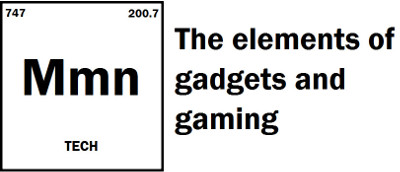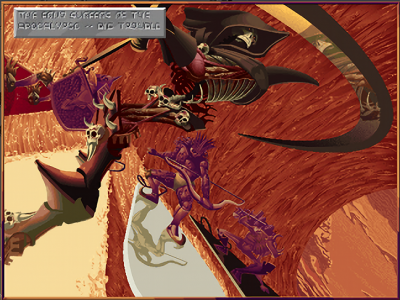

Things that bug me about PC gaming
Every time a new console generation comes around, it’s easy to be lured in by the newest shiny thing. However, I always seem to find myself drawn back to PC gaming. It’s like an addiction, I suppose, in the same way that cars are for gearheads. Maybe it’s the sense of freedom it provides you. Not being locked down to any one platform, or told what you can and can’t do with your games or hardware.
That said, it’s not perfect. There’s a lot of little annoyances things you have to deal with. Things that you eventually learn to live with, but can’t help by look on console players with envy.
The fragmented ecosystem
With consoles, you’re only dealing with a single ecosystem. You buy your PlayStation games from the PlayStation store, and access them through the PlayStation dashboard, and you play those games online via the PlayStation Network. Everything is all in one place where it’s easily accessible.
With PC, there’s multiple storefronts to buy your games from. Which isn’t necessarily a bad thing. After all, more competition usually means better prices and features for the end user. The problem is that every one of those storefronts now has their own launcher. You’ve got Steam of course, that’s the big one. But we also have GOG, the Epic Games Store, Ubisoft Uplay, EA Origin, the Rockstar Social Club, Battle.net, Bethesda.net, Xbox Pass, and more. Each one of which acts as its own little island, and none really play all that nice with each other. This can be a bit of a pain when it comes to multiplayer, as you’ll have multiple friends lists going at the same time. Not to mention how horrendous this setup is for couch play. More on that later.
There have been a few attempts out there that have tried to unify the experience. All with mixed results. Steam lets you add non-Steam games to its library, but the overlay doesn’t work with them. GOG Galaxy will put all your games into one handy list, but it doesn’t have any controller support. Playnite supports controllers, but you can’t shop or automatically download updates from there. There’s just no one, single, elegant solution. If only Microsoft would get its act together, and get all these companies working on the same page, so we’d at least have something closer to a simple Xbox-like experience for those that want it.
Couch play is not ideal
Contrary to popular belief, there’s nothing stopping you from hooking your PC up to a TV and playing games from your couch. Most games now have controller support, and let you use the gamepad of your choice to boot. However, that problem with fragmentation comes into play big time here.
Steam for example has a fairly robust TV mode called “Big Picture”. It lets you navigate your library, friends lists, and shop from the comfort of your living room. However, a lot of those other launchers mentioned earlier don’t have this. Some support controllers for navigating their interfaces, some don’t. And you can’t switch between them using just a gamepad. Sure, you can add non-Steam games to the Steam library. However, the Steam overlay will not work for those titles. Which is a bit of a problem for a lot of recent games that seem to overlook adding a “quit” button to their menus. Yakuza, I’m looking at you.
Windows just isn’t meant to be used with a controller, and there’s really no decent solution that I’ve found to make it. You can’t even access basic settings without having to grab a keyboard and mouse. Which necessitates a wireless setup (and a lot of junk on the couch), or some USB extension cables. Not exactly a console replacement if you’re looking for something to set up in the living room.
It’s getting bloody expensive
Let’s not beat around the bush here. PC gaming has never been a cheap hobby. Lately though, pricing has been getting rather absurd. And this was happening even before the CCPVirus caused widespread part shortages.
When I bought my RX 480 back in late 2016, I paid $290 Canadian kopeks for it. Similar classed cards now regularly retail in the $400-$500 range. That’s not due to inflation or the value of the dollar decreasing. Most of it is due to the crypto-mining boom of 2017. When supply went down and prices went up, and Nvidia discovered that people would tolerate paying more. A lot more. Well, the miners anyway. Team Green’s RTX 20 series GPUs saw significant price hikes across the board. As much as 70% on the high end, with the 2080 Ti being priced the same as the Titan XP. And prices, well, they just never came back down. In fact, the RTX 3090 Founders Edition is $200 USD more than even the 2080 Ti.
AMD quickly followed suit with their RDNA graphics cards. Not only that, but they’ve also raised motherboard prices. When Ryzen processors first came out, you could get a mid-range B350 board decently equipped for about $150. Now similarly spec’d B550 boards go for over $200 CAD. Keeping in mind this is still a mid-range product.
There used to be a time when you could make a case when PCs were more economical than consoles. What with being multi-purpose devices and all. However, that seems to be fading quickly.
Suspend and resume is janky as hell
One of the features I like most about modern consoles is the ability to put them into sleep mode, and pick your game right back up where you left off. It’s a super useful feature if you’re a busy adult who often gets called away from their gaming sessions. Especially if you’re stuck in a game that uses save checkpoints, and you’re not anywhere near them. Consoles can also run updates while they’re asleep, so you’re games are always patched when you want to play them.
PCs kind of do this, sort of. Just not very well. The other day I was playing a game after I got home from work. A Windows 10 app no less. I put the computer to sleep while I went away to get dinner. Came back, started back up. The game did indeed pick back up where I’d left off, but now refused to recognize my Xbox One controller. So I had to restart it to get the controller back working again. Which really defeats the purpose of having suspend/resume.
There’s also no obvious way to do automatic updates while the computer is in a low power mode. My Surface seems to do this, but on a desktop, that thing basically shuts itself right down, only powering the memory. So the OS or game launchers can’t run updates in this mode. I suppose the option is to just leave your PC on and locked 24/7. Some people do indeed do this, but it just seems stupid that we don’t have this feature by now when consoles have had it standard for over half a decade. Even the PS3 could automatically turn itself on at a set time to do its updates.
DRM keeps rearing its ugly head
DRM, copy protection, pirate hunting, whatever you want to call it, has begrudgingly been a part of PC gaming since the days of home micros. The one thing most of these measures have in common is that they simply serve to harass paying customers, while not stopping piracy at all. In fact, the more intrusive the method, the more it seems to egg pirate hackers on.
Things are a lot better today now that launchers tie game purchases to user accounts. There’s no more install limits, and always-online connections have mostly started to disappear from single player games. Which is a godsend to mobile PC gamers and those with crappy internet. Most DRM now largely operates transparently to the user. Better pricing and access have also gone a long way to thwarting those dastardly swashbucklers.
Yet every now and then, it still rears its ugly head. Denuvo, the most common method used to day, is well documented to hurt performance in certain games. Namely because the software is set to do far more frequent server checks than it really needs to. This isn’t much of a problem if you’re running something like an 8-core Ryzen processor, but it can be a huge issue for those with lower spec’d rigs.
We also now have the inclusion of anti-cheat tools from those same DRM companies, which run at the root level of the operating system. Cheating is a huge problem in popular online games, and these tools are supposedly there to prevent it. Yet many of them run at the root level of your operating system, essentially giving themselves carte blanche access to everything PC. Not only is that a big privacy risk, but a huge security threat as well. Many of these tools will go unpatched even with zero day exploits out in the wild. Which is why Windows 10 actually blocks older DRM methods that used similar root level access techniques. Oh, and if you remove them, they can prevent you from playing single player as well, for some reason. Because god forbid you type in something like IDDQD in your game.


